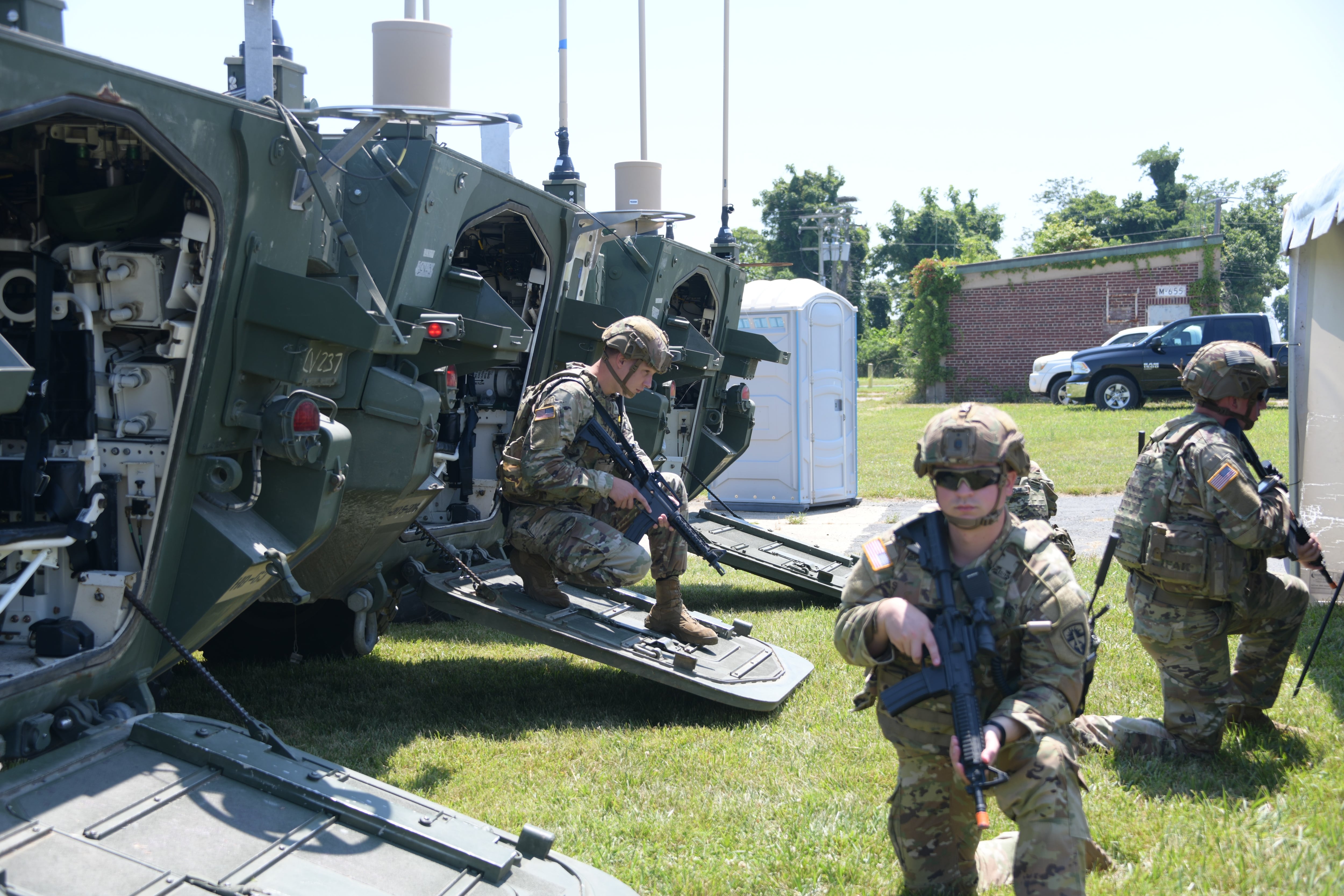WASHINGTON — U.S. Army officials spearheading the development and rollout of upgraded network technology and tools say they are making significant progress in achieving one of the service’s most pressing goals.
“What I would say is we continue to make a tremendous amount of momentum on our capability set initiative for one of our primary modernization focuses for the Army and the network,” Maj. Gen. Robert Collins, the program executive officer for command, control and communications-tactical, said April 20 at the C4ISRNET Conference.
Collins was accompanied by Brig. Gen. Jeth Rey, the director of the Network Cross-Functional Team.
As of last week, the Army was almost finished outfitting its seventh brigade combat team with gear associated with Capability Set ‘21, the first in a series of compounding two-year improvements informed by industry and soldiers. Nine teams are expecting the upgrades.
The capability set endeavor kicked off in fiscal year 2021, with goal posts planted in fiscal years 2023, 2025, 2027 and beyond. Army officials in 2019 likened the incremental approach to Apple’s iPhone strategy: new, enhanced hardware rolling out on the heels of the last release.
Capability Set ‘21 focuses on infantry brigades, increased connectivity and making communications gear smaller, lighter, faster and more flexible.
Collins earlier this year said the set was 50% fielded.
“That’s everything from kit that goes down to the brigade combat teams that we’ve done there, and that does include capability we put out to the 82nd Airborne, that did deploy,” the general said at an event in Belcamp, Maryland.
Capability Set ‘23 will focus on Strykers, boosted bandwidth and additional paths for communication, among other goals. C4ISRNET in February reported that officials believe Capability Set ‘23 begins to lay the foundation of Joint All-Domain Command and Control, the Pentagon’s campaign to make seamless communication and data sharing reality.
Network modernization is a major focus for the Army, as the service shifts toward what’s known as multidomain operations — the ability to fight and win across land, air, sea, space and cyber — and the threat of a contested and congested communication environment proliferates.
“As our nation’s adversaries increasingly contest our historical dominance in all operational domains, the unified network is the critical enabler to the success of the future force,” guiding documents published by the Army last year stated.
Those involved have full plates. Beyond wrapping up Capability Set ‘21, a critical design review for Capability Set ‘23 is set for this week, marking a key acquisition milestone, and a technical meeting for Capability Sets ‘25 and ‘27 is planned for May.
“I would say right now, we have four of our capability sets that are going on in parallel,” Collins said at the conference. The general further recognized Capability Set ‘21 as “foundational,” generating great insights that will be applied in the near future.
“The Capability Set ‘21 effort has provided us a tremendous amount of feedback as we get ready to head on into, and embark upon, the Capability Set ‘23 fielding process,” Collins said.
Colin Demarest was a reporter at C4ISRNET, where he covered military networks, cyber and IT. Colin had previously covered the Department of Energy and its National Nuclear Security Administration — namely Cold War cleanup and nuclear weapons development — for a daily newspaper in South Carolina. Colin is also an award-winning photographer.








